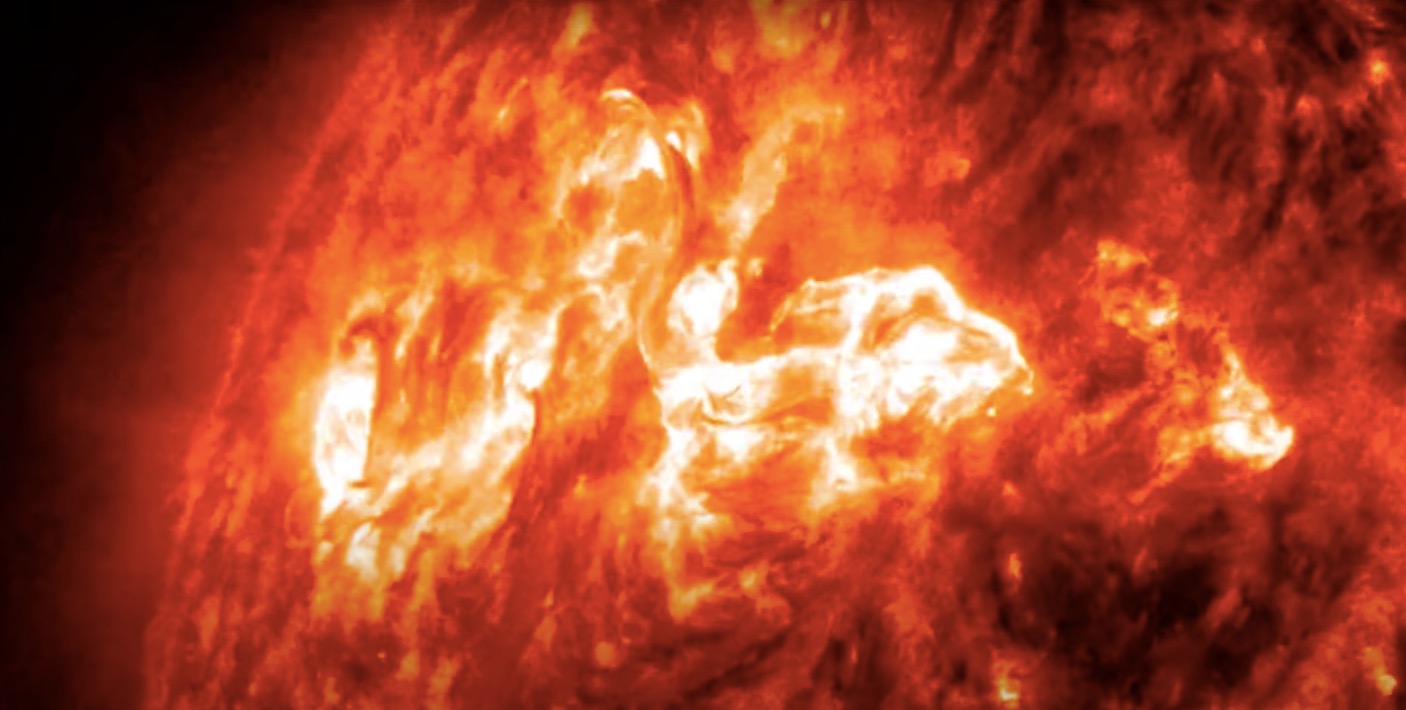The sun flexed its considerable magnetic muscles today (June 13), and two solar spacecraft captured the show on video.
Earth's star unleashed a long-duration solar flare early this morning, blasting high-energy radiation into space for about three hours. NASA's Solar Dynamics Observatory (SDO), which has been studying the sun from Earth orbit since 2010, observed the dramatic event in multiple wavelengths.
The flare registered as an M3.4, putting it in the "medium" class of solar outburst. It was strong enough, however, to cause temporary radio blackouts in the Asia-Pacific region here on Earth. (Scientists put powerful solar flares into three categories, C, M and X, with C being the weakest and X the most intense.)
Related: The sun's wrath: Worst solar storms in history

This morning's flare was also associated with a coronal mass ejection (CME), a huge cloud of superheated plasma that rockets away from the sun at tremendous speeds. Both SDO and the Solar and Heliospheric Observatory (SOHO), a NASA/European Space Agency probe that launched in 1995, snapped imagery of today's CME, showing the plasma cloud's immense size and impressive speed.
The two spacecraft's views were complementary, given their different orbits; SOHO circles the sun at the Lagrange Point 1, a gravitationally stable spot in space about 930,000 miles (1.5 million kilometers) from Earth in the direction of our star.
Big CMEs that hit Earth can trigger powerful geomagnetic storms, which can have effects both negative (potential satellite damage) and positive (supercharged auroral displays). But it doesn't appear that today's CME was aligned with Earth, experts said.
Get the Space.com Newsletter
Breaking space news, the latest updates on rocket launches, skywatching events and more!
The sun has been firing off a number of flares recently. That's no surprise, given that our star's 11-year activity cycle is expected to peak in 2025 or so.
Mike Wall is the author of "Out There" (Grand Central Publishing, 2018; illustrated by Karl Tate), a book about the search for alien life. Follow him on Twitter @michaeldwall. Follow us on Twitter @Spacedotcom or on Facebook.
Join our Space Forums to keep talking space on the latest missions, night sky and more! And if you have a news tip, correction or comment, let us know at: community@space.com.

Michael Wall is a Senior Space Writer with Space.com and joined the team in 2010. He primarily covers exoplanets, spaceflight and military space, but has been known to dabble in the space art beat. His book about the search for alien life, "Out There," was published on Nov. 13, 2018. Before becoming a science writer, Michael worked as a herpetologist and wildlife biologist. He has a Ph.D. in evolutionary biology from the University of Sydney, Australia, a bachelor's degree from the University of Arizona, and a graduate certificate in science writing from the University of California, Santa Cruz. To find out what his latest project is, you can follow Michael on Twitter.








